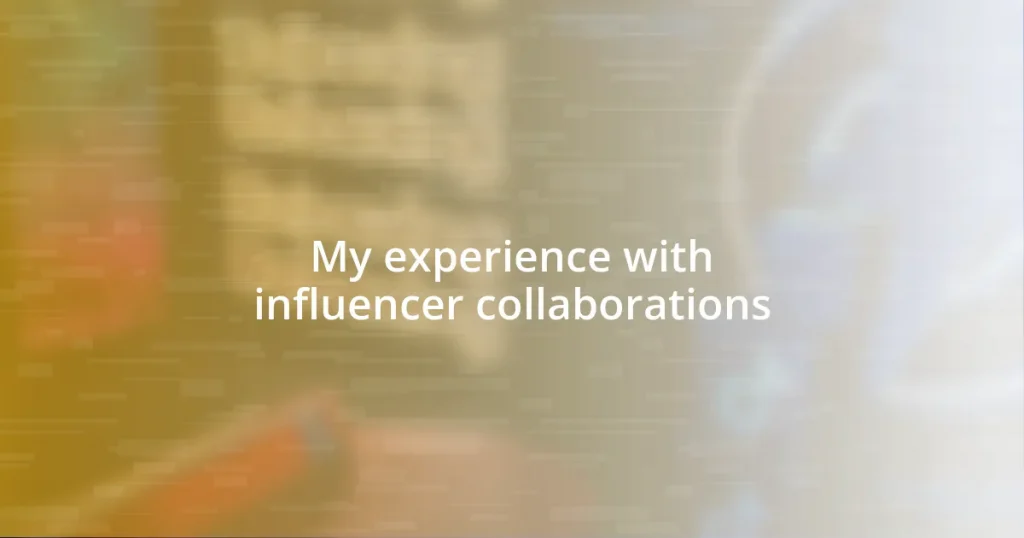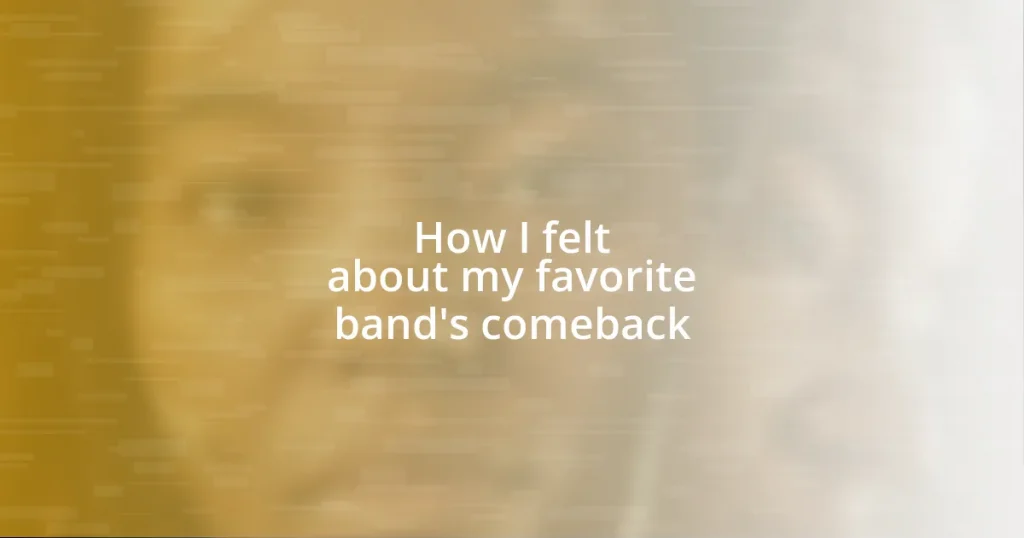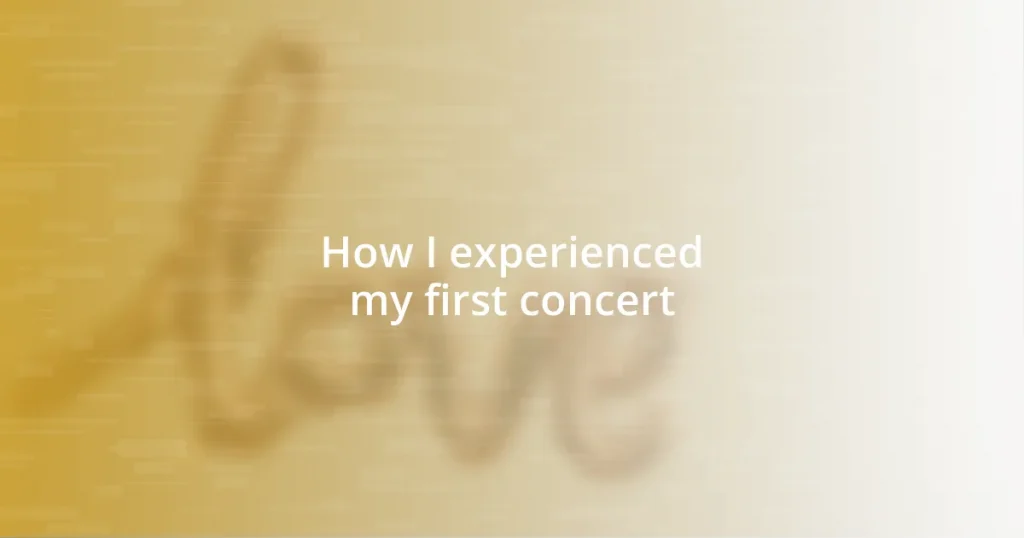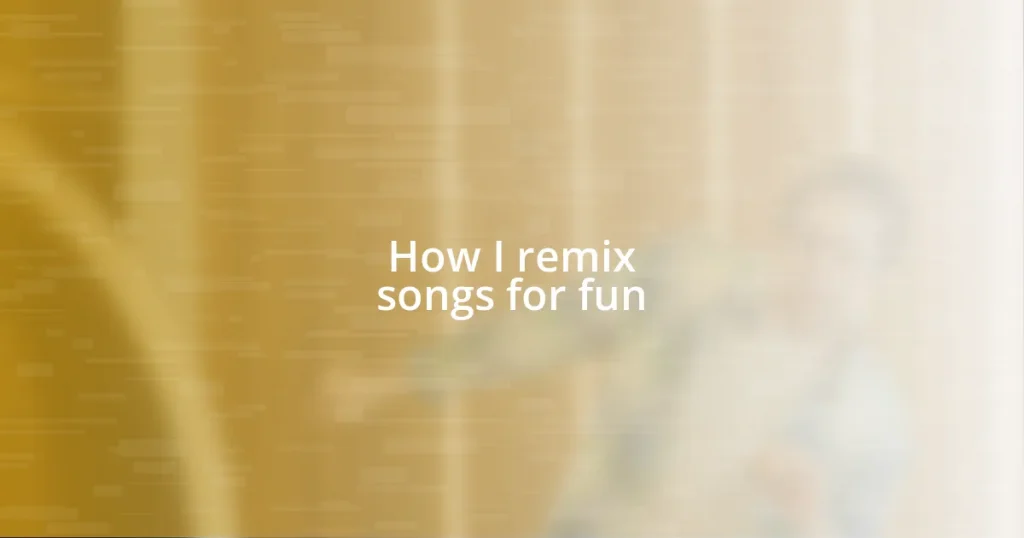Key takeaways:
- Authenticity and alignment with brand values are crucial when selecting influencers for collaborations.
- Setting clear collaboration goals allows for better measurement of success and adaptability based on audience feedback.
- Effective communication, including regular check-ins and openness to feedback, strengthens influencer partnerships.
- Scaling influencer partnerships requires a tailored approach and prioritizing quality over quantity, often benefiting from micro-influencers.
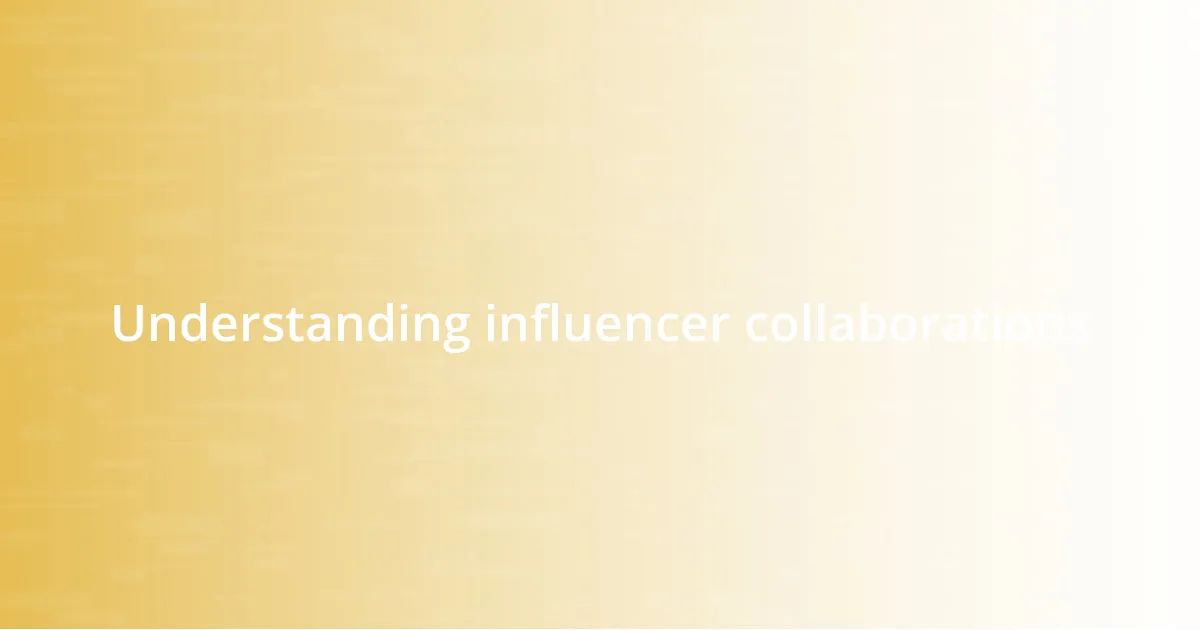
Understanding influencer collaborations
Influencer collaborations are a fascinating blend of marketing and personal connection. When I first ventured into this realm, I was surprised by the genuine relationships that could bloom from a simple business arrangement. Have you ever thought about how influencers shape consumer choices? Their authentic voice can create trust, making followers feel like they’re getting advice from a friend rather than a commercial entity.
I remember partnering with an influencer whose passion for eco-friendly products mirrored my own beliefs. It wasn’t just about promoting a product; it felt like we were joining forces to advocate for sustainability. This shared mission turned our collaboration into something more impactful, evoking emotions that went beyond sales. The excitement I felt when seeing their post shared by their audience was tangible—what a thrill to know that our message reached so many!
Moreover, understanding the dynamics of these collaborations requires recognizing the influencer’s audience. I learned the hard way that aligning the right influencer with your brand isn’t just important; it’s essential. I once worked with someone whose followers enjoyed completely different products, and the results were less than stellar. It made me realize: how crucial is it to know your target audience when choosing an influencer? The answer, as I discovered, is vital for success.
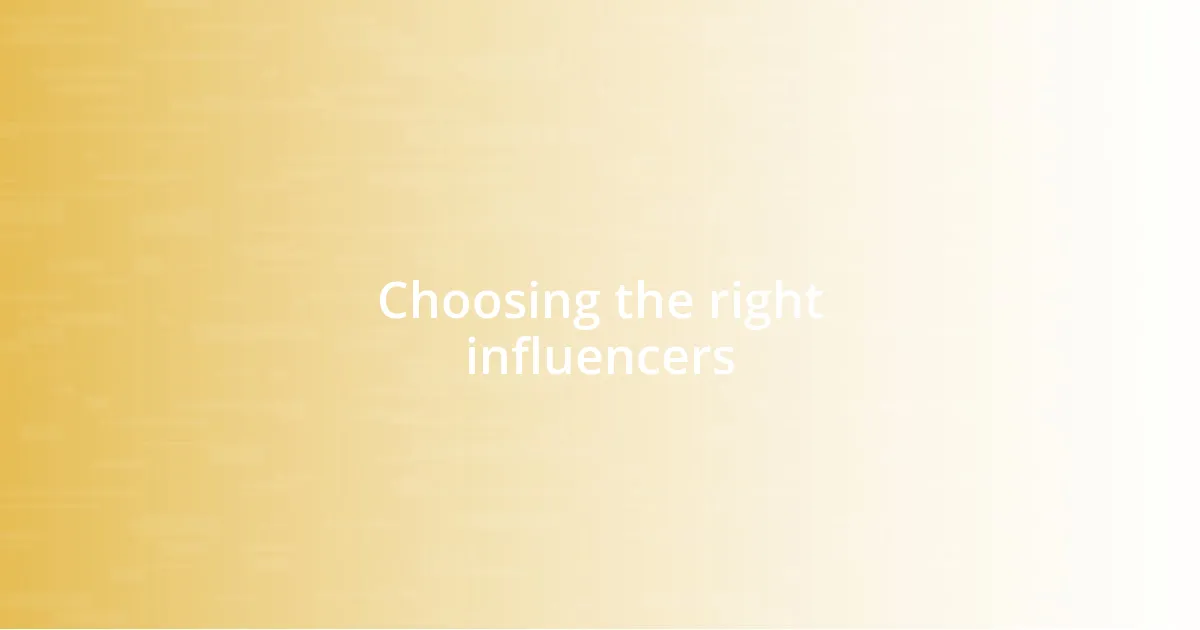
Choosing the right influencers
When it comes to choosing the right influencers, I’ve learned that authenticity is key. One time, I collaborated with an influencer whose genuine interest in my brand shone through every post. Their followers weren’t just numbers; they responded with enthusiasm, something that can really amplify a message. This experience reinforced my belief that an influencer’s personal connection to the product can greatly enhance the collaboration’s success.
Here are a few crucial factors I consider when selecting influencers:
- Alignment with Brand Values: Ensure their values resonate with your brand’s mission.
- Audience Demographics: Look at who their followers are; are they your target customers?
- Engagement Rate: High follower counts are great, but engagement is what counts. Check likes and comments.
- Content Style: It’s essential that their content style matches your brand’s voice.
- Past Collaborations: Review their previous partnerships for authenticity and professionalism.
Choosing the right influencers can transform an entire campaign, leading to success that goes beyond mere sales numbers.
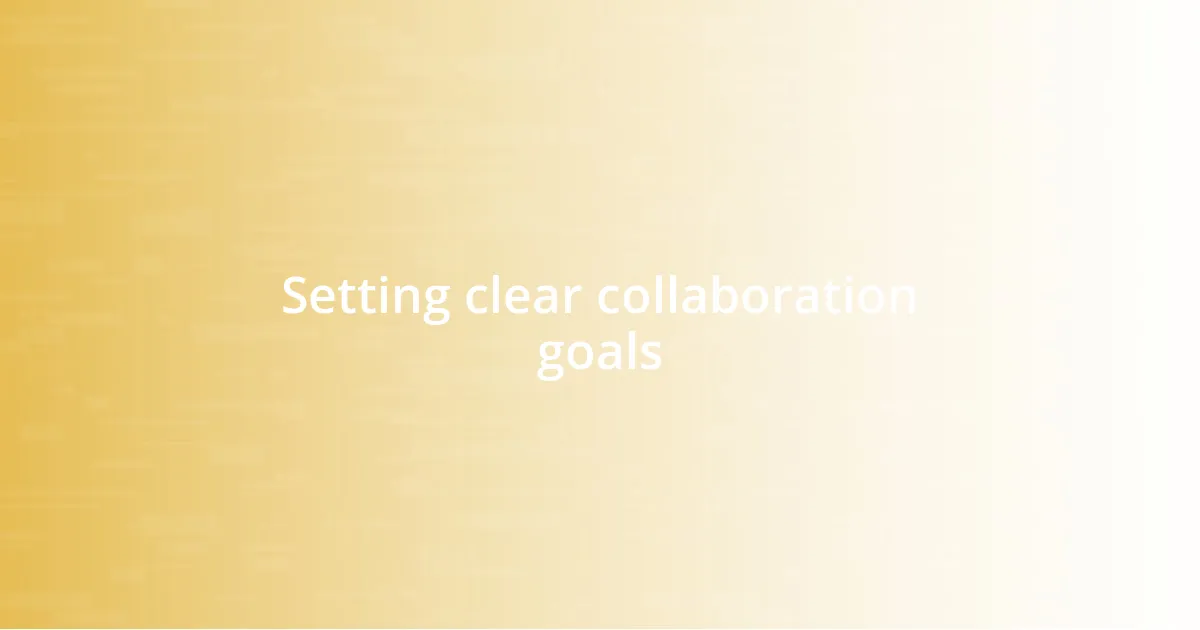
Setting clear collaboration goals
Setting clear collaboration goals is crucial to the success of any influencer partnership. Early on in my experience, I understood that having specific objectives not only provides direction but also serves as a benchmark for measuring success. For instance, during one collaboration, I aimed to increase brand awareness, but we could have benefitted from integrating clear metrics, like engagement rates or click-throughs on specific campaigns. By defining such goals upfront, it became easier to stay focused and assess our outcomes.
I vividly recall a project where our goal was to generate content that led to direct sales. While we achieved significant visibility, the sales conversion didn’t meet expectations. Reflecting on this, I realized that setting clearer targets—like a specific sales figure or tracking the audience’s journey from interest to purchase—would have offered valuable insights. Have you ever found yourself in a similar situation? I learned that, without defined goals, it’s all too easy to miss the mark.
Another aspect I’ve noticed in setting goals is the importance of flexibility. One collaboration I navigated had evolving targets based on audience feedback. As we adjusted our approach, our results significantly improved. It taught me that while having goals is essential, being open to tweaking them in response to real-time data can lead to greater success in influencer partnerships.
| Goal Type | Description |
|---|---|
| Brand Awareness | Focus on increasing visibility and reach through influencer posts. |
| Engagement | Aim to boost likes, comments, and shares; a sign of audience interest. |
| Sales Conversion | Set specific targets for sales generated through the collaboration. |
| Audience Growth | Measure the growth in follower count post-collaboration. |
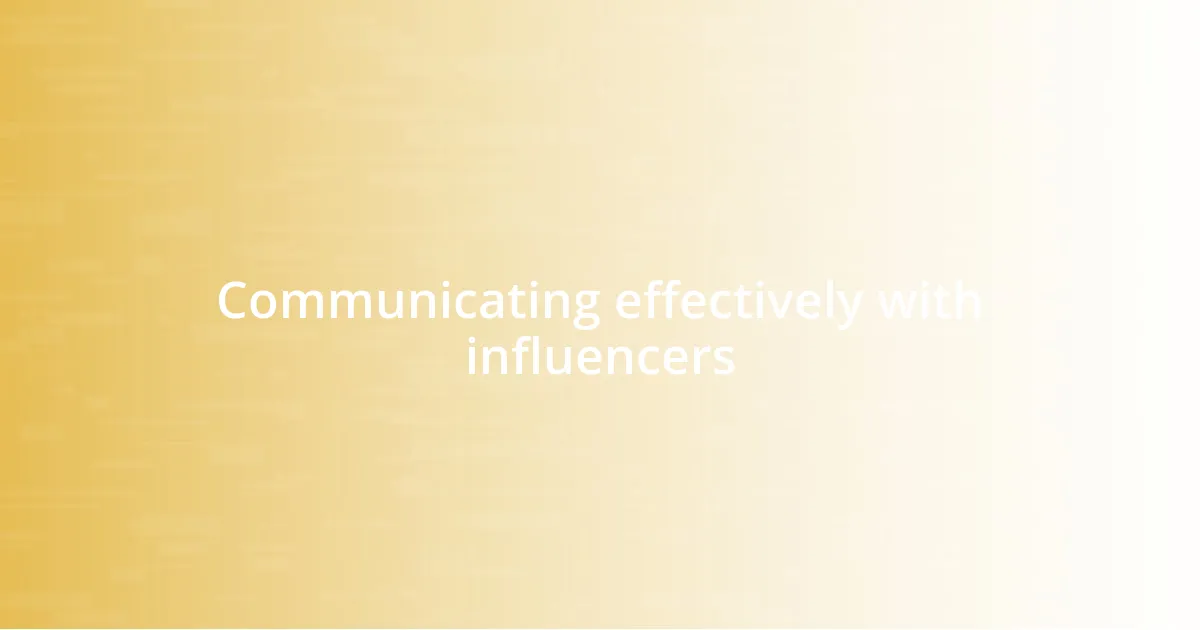
Communicating effectively with influencers
Effective communication is the backbone of successful influencer collaborations. I’ve learned that being transparent about expectations can create a collaborative atmosphere where both parties feel valued. During one project, I was candid about my vision for the campaign, and it invited the influencer to share their creative ideas, resulting in a campaign that felt authentic and engaging.
Listening plays a crucial role, too. I remember a time when an influencer suggested a shift in the campaign direction based on their understanding of their audience’s needs. Initially hesitant, I soon realized that their input was invaluable. Have you ever had that lightbulb moment when someone else’s perspective transformed your approach? Embracing this level of communication not only strengthened our partnership but also enriched the overall campaign.
Regular check-ins are equally essential. A former influencer collaborator and I scheduled brief weekly catch-ups to discuss progress and tweaks. These conversations became moments of inspiration, sparking fresh ideas and ensuring that we were always aligned. Isn’t it refreshing to be part of a process where ideas flow freely and both sides feel heard? This experience solidified my belief that ongoing communication can elevate influencer partnerships to new heights.
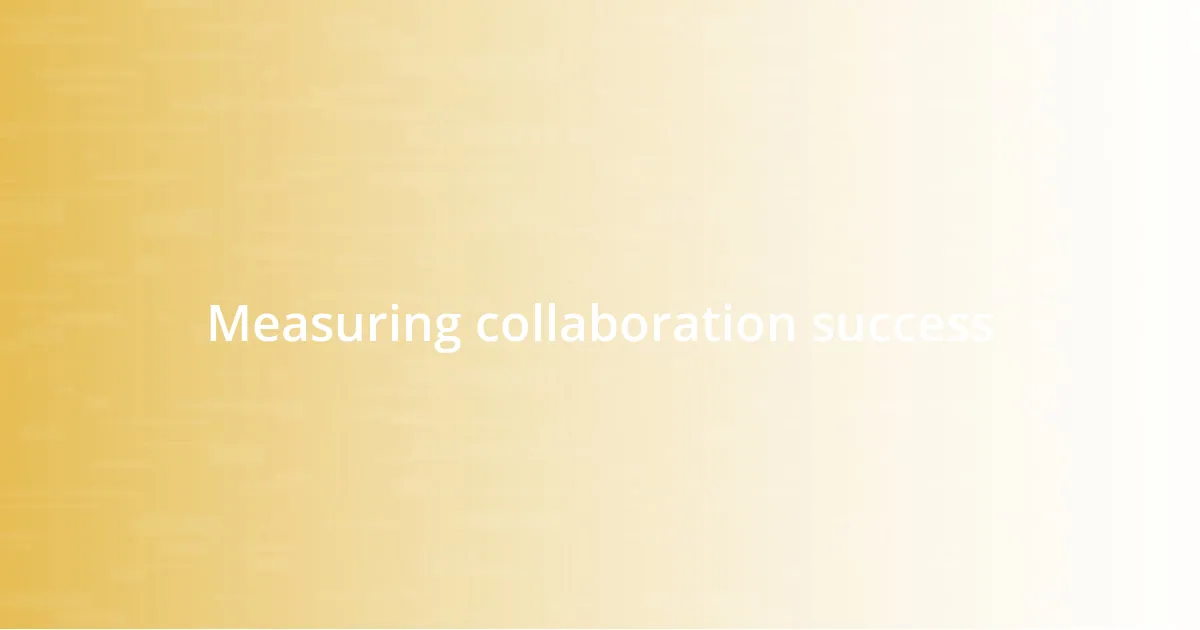
Measuring collaboration success
Measuring the success of an influencer collaboration can often feel like navigating a maze. I remember one particular partnership where we launched a campaign with great enthusiasm, but it quickly became clear that our metrics weren’t aligned with our goals. We checked focuses like likes and shares, but we didn’t track how many people visited our website or signed up for our newsletter. This oversight taught me that the real measure of success lies not just in numbers, but in how they relate to our initial goals. Have you ever been caught up in the excitement only to realize later that you didn’t have the right markers?
One effective strategy I’ve embraced since then is utilizing tools that offer comprehensive analytics. For instance, after a campaign wrapped up, I dissected the performance reports and noticed a spike in our follower count but a surprisingly low engagement percentage. It was a mixed bag that taught me to look deeper into our audience’s behavior. I now ask questions like, “Are these followers genuinely interested in what we offer?” This focus on qualitative data not only strengthens my future collaborations but also shapes my content strategy more effectively.
Ultimately, I learned that conducting post-collaboration surveys with both the influencer and the audience can provide rich insights. After one successful project, I gathered feedback from the influencer and their audience. The insights revealed not just what worked, but also areas for improvement. This ongoing dialogue has become an invaluable part of my collaboration process, enhancing future projects. Isn’t it fascinating how some of the best lessons come from honest reflection? I aim for growth, and I encourage everyone to keep measuring, adapting, and learning.
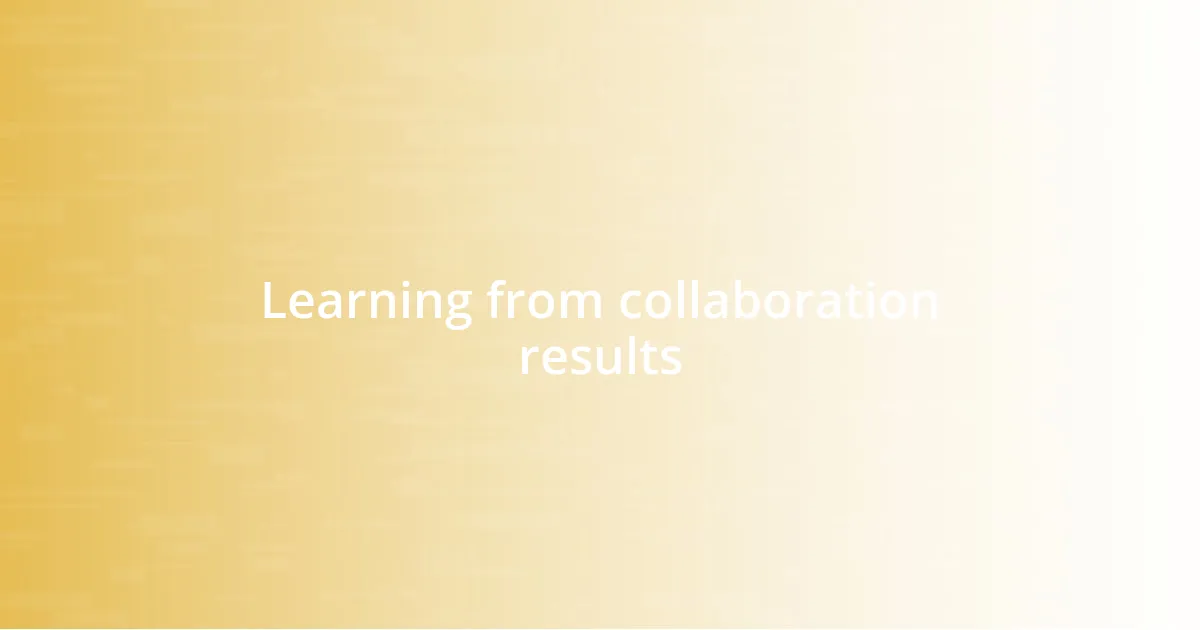
Learning from collaboration results
Reflecting on collaboration results provides the groundwork for future successes. I remember one specific campaign where everything went as planned, yet the engagement wasn’t as high as I’d hoped. It was a bit disheartening, to be honest, but instead of dwelling on it, I gathered my findings and sat down to analyze what went wrong. This introspection revealed not just flaws in my approach but deeper insights about our audience changes. Have you ever experienced that moment when a setback becomes a stepping stone for growth?
Another key lesson emerged when I started involving the influencer in the reflection process. During one wrap-up meeting, we discussed the campaign metrics, and I asked them for their honest thoughts. Their feedback was eye-opening—what I considered a minor detail turned out to be a significant impact on their audience. It’s moments like these that remind me how closely intertwined understanding and collaboration are. Isn’t it empowering to realize that feedback can transform your perspective?
Finally, I’ve found that understanding the context behind the numbers is critical. After launching a major campaign, I celebrated the increase in click-through rates but later uncovered that the increase didn’t translate into actual sales. It stung a bit to face that reality, but it also lit a fire under me to explore deeper, more meaningful connections with our audience. How often do we take a victory lap only to find out the finish line wasn’t what we thought? Embracing these learnings has allowed me to adapt my strategies, making room for more intentional and impactful future collaborations.
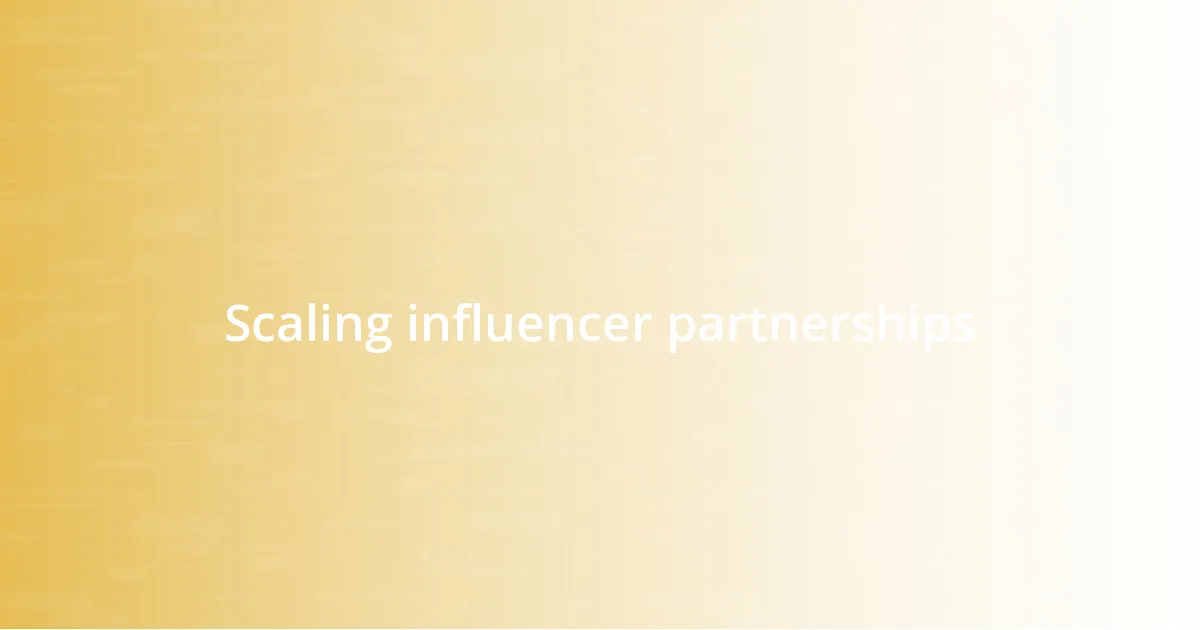
Scaling influencer partnerships
Scaling influencer partnerships requires a strategic mindset and the willingness to experiment. In one of my earlier collaborations, I thought I could simply replicate a successful campaign, but that backfired. This taught me that scaling isn’t about copying; it’s about adapting. Have you ever tried to force a mold only to find it didn’t fit? I learned that each partnership deserves a tailored approach to resonate with different audiences.
An effective scaling strategy I’ve employed is forging partnerships with a broader range of influencers, not just those with massive followings. I remember partnering with a micro-influencer who had a smaller, yet incredibly engaged audience. The results were astonishing. Sometimes, genuine connections spark more interest than sheer numbers. This experience reinforced my belief that quality often outweighs quantity. Have you ever noticed how an authentic recommendation can drive more action than a generic shout-out?
Furthermore, I’ve started creating frameworks for consistent communication and collaboration across partnerships. Early on, I overlooked the importance of keeping influencers in the loop post-campaign. Now, I prioritize regular check-ins and discussions about future projects. I often think back to when I reached out for feedback after a campaign, and the insights I gained reshaped our ongoing strategy. It turned out that keeping those lines open can dramatically strengthen our partnerships. How do you approach maintaining these relationships? I’ve discovered that by making influencers feel like valuable team members, the potential for scaling grows exponentially.










